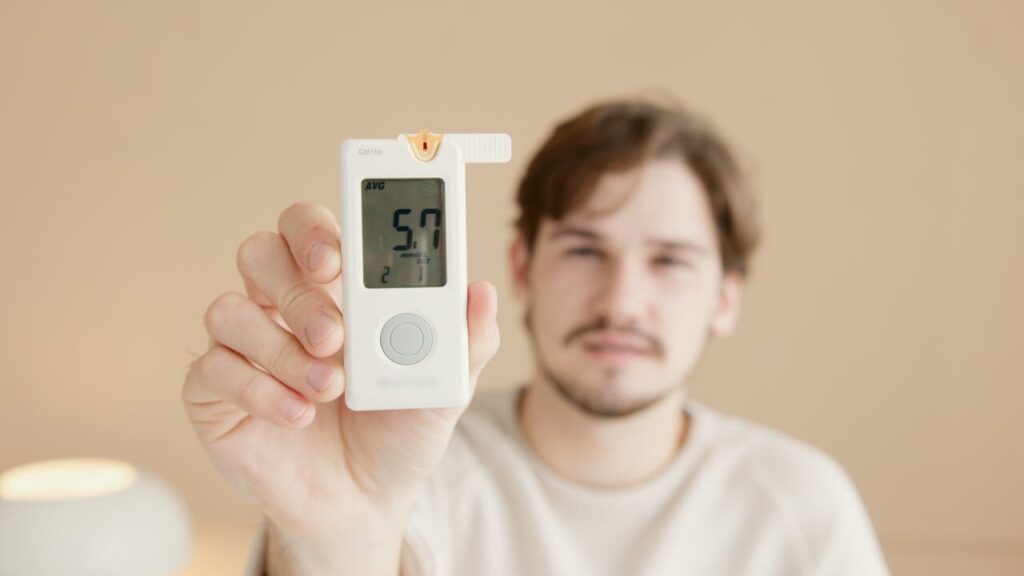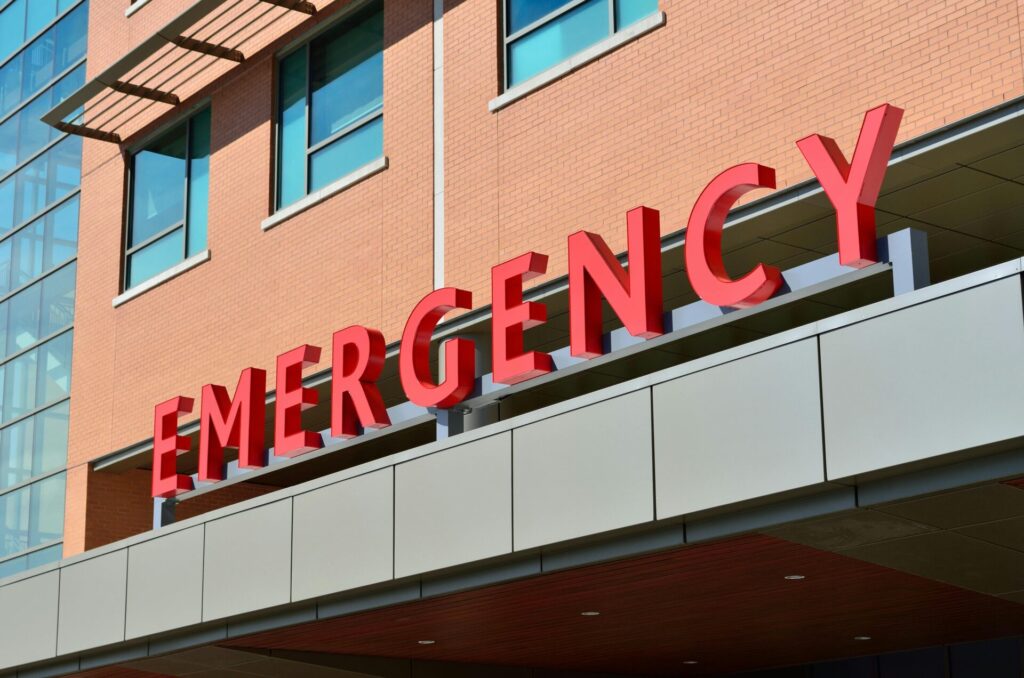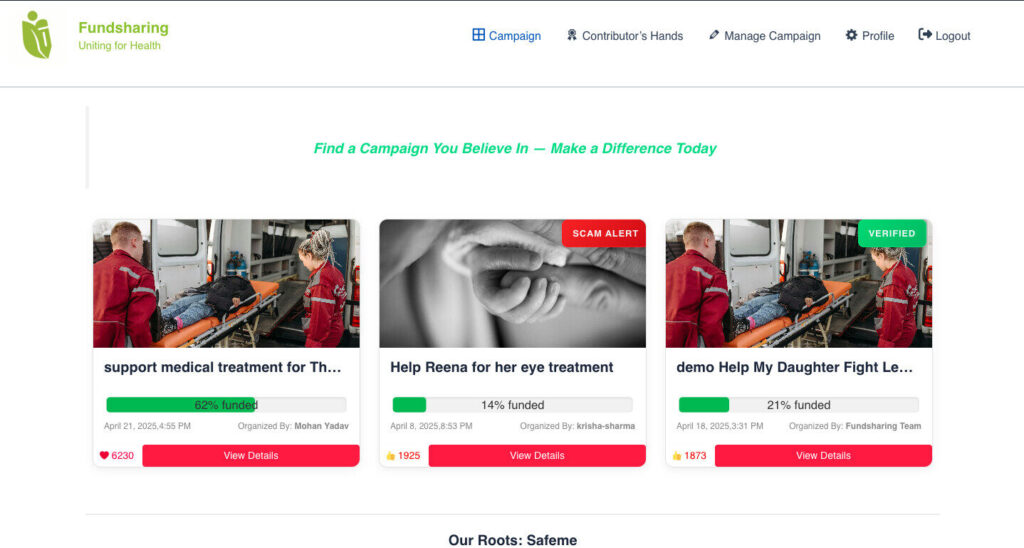Table of Contents
Diabetic emergencies, such as hypoglycemia and hyperglycemia, require swift recognition and action to prevent serious complications. Understanding diabetic emergency symptoms and treatment is critical for anyone managing diabetes or supporting someone who does. This article explains how to identify diabetic emergency symptoms and treatment, offers guidance on how to treat low blood sugar quickly, and provides a diabetes emergency first aid guide to handle these crises effectively.
Recognizing Diabetic Emergency Symptoms and Treatment

Diabetic emergencies occur when blood sugar levels become dangerously low (hypoglycemia) or high (hyperglycemia). Knowing the signs and diabetic emergency symptoms and treatment can make a life-saving difference.
Hypoglycemia (Low Blood Sugar)
Hypoglycemia, when blood sugar drops below 70 mg/dL, is a common diabetic emergency. Recognizing diabetic emergency symptoms and treatment for hypoglycemia is vital for quick intervention.
Symptoms of Hypoglycemia
- Shaking, sweating, or chills
- Confusion or irritability
- Dizziness or weakness
- Hunger or nausea
- Severe cases: seizures or unconsciousness
How to Treat Low Blood Sugar Quickly
To address diabetic emergency symptoms and treatment for hypoglycemia:
- Confirm Low Blood Sugar: Use a glucometer if available to verify levels.
- Give Fast-Acting Carbohydrates: Provide 15-20 grams of simple sugars, such as:
- 4-6 ounces of regular soda (not diet)
- 1 tablespoon of sugar or honey
- 3-4 glucose tablets
- Recheck After 15 Minutes: If blood sugar remains low, repeat the treatment.
- Stabilize with a Snack: Once levels normalize, offer a protein-rich snack (e.g., cheese and crackers).
- Call 911 if Needed: If symptoms persist or the person loses consciousness, seek emergency help.
Learning how to treat low blood sugar quickly ensures effective management of this diabetic emergency.
Hyperglycemia (High Blood Sugar)
Hyperglycemia, when blood sugar exceeds 180 mg/dL, can lead to severe conditions like diabetic ketoacidosis (DKA). Understanding diabetic emergency symptoms and treatment for hyperglycemia is essential.
Symptoms of Hyperglycemia
- Excessive thirst and urination
- Fatigue or blurred vision
- Nausea or dry skin
- Severe cases (DKA): fruity breath, rapid breathing, or confusion
Treatment for Hyperglycemia

For diabetic emergency symptoms and treatment of hyperglycemia:
- Check Blood Sugar: Confirm high levels with a glucometer.
- Administer Insulin: Follow the person’s diabetes plan for insulin, if known.
- Hydrate: Encourage water intake to reduce dehydration.
- Test for Ketones: If blood sugar is above 240 mg/dL, check for ketones using test strips.
- Seek Medical Help: Call 911 if ketones are present or symptoms worsen.
Diabetes Emergency First Aid Guide
A diabetes emergency first aid guide equips you to act decisively during a crisis. Follow these steps for diabetic emergency symptoms and treatment:
- Assess Symptoms: Determine if it’s hypoglycemia or hyperglycemia. If unsure, treat for hypoglycemia first, as it progresses faster.
- Stay with the Person: Monitor their condition closely.
- Call Emergency Services: Dial 911 for unconsciousness, seizures, or severe hyperglycemia signs.
- Provide First Aid: For hypoglycemia, use fast-acting carbohydrates as outlined in how to treat low blood sugar quickly. For hyperglycemia, ensure hydration and seek medical advice.
- Communicate Details: Inform responders about treatments given and the person’s diabetes type.

Global Diabetes Prevalence in 2024-2025
The global burden of diabetes is rising, with significant variations by country. The table below, based on the IDF Diabetes Atlas 2025, shows the estimated number of adults (20-79 years) with diabetes in select countries for 2024.
| Country | Estimated Adults with Diabetes (2024, in millions) |
|---|---|
| China | 148.2 |
| India | 80.9 |
| Pakistan | 33.6 |
| United States | 32.2 |
| Indonesia | 21.8 |
| Mexico | 14.1 |
| Bangladesh | 13.1 |
| Egypt | 11.9 |
| Brazil | 11.7 |
| Turkey | 9.5 |
Source: IDF Diabetes Atlas 2025, www.diabetesatlas.org
These figures highlight the urgent need for awareness of diabetic emergency symptoms and treatment, especially in high-prevalence regions like Pakistan (30.8% prevalence) and India.
Prevention Tips
Prevent diabetic emergency symptoms and treatment needs by:
- Monitoring blood sugar regularly.
- Adhering to prescribed insulin or medication schedules.
- Eating balanced meals consistently.
- Preparing with medical ID bracelets and glucagon kits.
Trusted Sources for More Information

- American Diabetes Association: www.diabetes.org – Guides on diabetic emergency symptoms and treatment.
- CDC – Diabetes: www.cdc.gov/diabetes – Resources for diabetes management.
- National Institute of Diabetes and Digestive and Kidney Diseases: www.niddk.nih.gov – Research on diabetes care.
Financial Support for Medical Emergencies
If you or your loved ones are facing a medical emergency and need urgent financial help, visit www.fundsharing.org — a trusted, transparent, and community-driven fundraising platform. Fundsharing.org empowers patients to raise emergency funds without any platform charges, ensuring that every donation goes directly toward treatment. Built for compassion and speed, it’s the lifeline you need during critical health crises.

FAQ: Diabetic Emergencies & First Aid

What are the symptoms of a diabetic emergency?
Common signs include shakiness, confusion, extreme fatigue, sweating, rapid heartbeat, dizziness, blurred vision, or fainting. If the person becomes unresponsive or starts having seizures, call emergency services immediately.
What’s the fastest way to treat low blood sugar?
The 15-15 rule: Give the person 15 grams of fast-acting sugar (juice, glucose tablets, regular soda—not diet), then wait 15 minutes and recheck. Repeat if needed. Avoid feeding them heavy foods or chocolates that take longer to absorb.
Is it true you should give chocolate during low blood sugar?
🚫 No, that’s a myth.
Chocolate has too much fat, which slows down sugar absorption. In emergencies, you need fast-absorbing sugar, like glucose tablets, fruit juice, or plain sugar water.
Someone told me to give insulin during diabetic emergencies. Is that correct?
⚠️ Only give insulin if you are 100% sure the person has high blood sugar and is conscious and stable.
Never give insulin during low blood sugar, or if the person is unconscious — it can be fatal.
Can I pour sugar into the mouth of an unconscious person?
🚫 No! Never do this.
They may choke or aspirate. If the person is unconscious, call emergency services immediately. If available, trained responders may use glucagon injection or IV glucose.
Should I give water during a diabetic emergency?
✅ Yes, if they’re awake and alert and you suspect high blood sugar, water can help flush out excess glucose.
🚫 But if the person is dizzy or not fully conscious, do not give anything by mouth — call for help.
How can I tell if it’s high or low blood sugar without a glucometer?
It’s difficult — but in general:
- Low blood sugar: sudden confusion, sweating, trembling, hunger, pale skin
- High blood sugar: extreme thirst, dry mouth, fruity breath smell, nausea, frequent urination
If unsure, and the person is awake and able to swallow, give a small amount of sugar — it’s safer than delaying treatment for possible low sugar.
❓ Can diabetic emergencies be prevented?
Yes. Monitoring blood sugar regularly, eating balanced meals on time, and always carrying glucose tablets or a small juice box can prevent most emergencies. Also, teach friends and family what to do if symptoms appear.
Read More Articles
Want to dive deeper into secure giving, fundraising success, and donor protection?
- 🔗 How to Recognize Heart Attack Symptoms Fast
- 🔗 Reasons People Don’t Donate
- 🔗 How to Choose a Campaign
- 🔗 Why Donate Online?
- 🔗 Top 10 Foundations in the World
- 🔗 Top 10 Most Charitable Countries
- 🔗 How to Start Fundraising
- 🔗 How to Become Successful in Fundraising
- 🔗 How to Fundraise Without Social Media
- 🔗 The Global Medical Debt Crisis
- 🔗 Importance of Donors in Healthcare
- 🔗 How to Get Help Paying for Emergency Surgery
- 🔗 How to Make Your Fundraiser Go Viral
- 🔗 How to Save a Life During a Medical Emergency
- 🔗 How to Ask for Donations Online
- 🔗 Financial Help for Hospital Bills
- 🔗 Wireless Security Cameras Risks
- 🔗 Facebook Hacking: What You Need to Know
- 🔗 How to Tackle with Suicidal Thoughts
